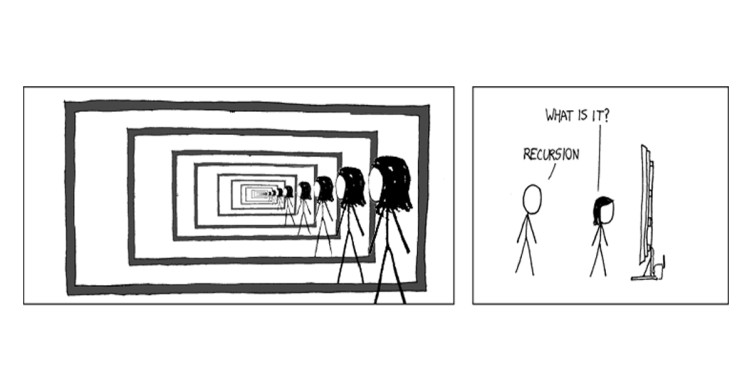Recursion part - 2.
 Ashish Guleria
Ashish GuleriaTable of contents

Introduction: On this fourth day of my #100DaysOfCode challenge, I delved deeper into the world of recursion. Recursion is a powerful concept in programming that allows us to solve complex problems by breaking them down into smaller, more manageable parts. Today, I explored recursion with a specific focus on examples like the Fibonacci series. I learned how to formulate recurrence relations and base conditions, making the whole process clearer.
Understanding Recursion:
Breaking Down Problems: Recursion involves breaking down a problem into smaller, more manageable subproblems. This simplifies the overall task. For instance, the Fibonacci series is a prime example:
fn = f(n-1) + f(n-2).def fibonacci(n): if n <= 0: return 0 elif n == 1: return 1 else: return fibonacci(n - 1) + fibonacci(n - 2) # Usage n = 10 result = fibonacci(n) print(f"The {n}-th Fibonacci number is {result}")Recurrence Relations: When we express recursion as a formula, we call it a recurrence relation. The base condition represents the answer we already have.
Solving Recursion:
Dividing into Smaller Problems: The first step in solving a problem with recursion is to break it down into smaller parts and then apply recursion to these subproblems.
Recursive Tree: Visualizing the recursion tree helps understand the flow and structure of the problem.
Approaching a Recursion Problem:
Identifying Subproblems: Begin by identifying if you can break the problem into smaller, more manageable subproblems.
Formulating Recurrence Relation: Create a recurrence relation if necessary to represent the relationship between subproblems.
def binary_search(arr, target, left, right): if left > right: return -1 # Element not found mid = (left + right) // 2 if arr[mid] == target: return mid # Element found at index mid elif arr[mid] < target: return binary_search(arr, target, mid + 1, right) # Search right half else: return binary_search(arr, target, left, mid - 1) # Search left half # Usage my_list = [1, 2, 3, 4, 5, 6, 7, 8, 9, 10] target_element = 7 result = binary_search(my_list, target_element, 0, len(my_list) - 1) if result != -1: print(f"Element {target_element} found at index {result}") else: print(f"Element {target_element} not found in the list.")Drawing the Recursive Tree: Visualize the recursive tree to better understand how the functions stack.
Flow of Functions: Observe how functions get pushed onto the stack, and focus on the left and right tree calls. Use a debugger to step through the program's execution.
Key Areas of Focus for Beginners:
Function Calls: Pay close attention to how functions are called, and understand the flow of the program.
Variables and Data Types: Properly choose variable types and data structures for different parts of your recursive program. Knowing what to return is crucial.
Working with Recursive Functions:
Arguments: Whatever you put in the arguments of a function will be passed to the next function call.
Return Type: Choose the return type based on what you want the function to yield.
Function Body: Variables specific to a particular function call should reside within the function body.
Types of Recurrence Relations:
Linear Recurrence Relation: For example, the Fibonacci series.
Divide & Conquer Recurrence Relation: An example is the binary search.
Conclusion: In conclusion, day 4 of my #100DaysOfCode challenge was all about mastering recursion. I explored the art of breaking down complex problems into simpler parts, formulated recurrence relations, and learned how to visualize recursion trees. Understanding the flow of functions and choosing the right variables and data types is crucial for success in recursive programming. Keep in mind that there are different types of recurrence relations, and each serves its purpose. So, happy coding, and let's continue the learning journey!
Subscribe to my newsletter
Read articles from Ashish Guleria directly inside your inbox. Subscribe to the newsletter, and don't miss out.
Written by

Ashish Guleria
Ashish Guleria
CSE undergrad 💻| Tech Enthusiast 👨💻 | Learning and Observing. 🚀📈